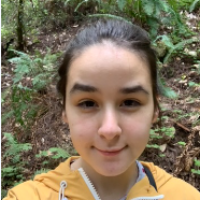5 Priceless Tips To Speak Spanish In 6 Months

One of the most studied languages in the world, Spanish is a common language taught in U.S. schools, with Mexico at its southern border and a growing population of Spanish-speaking immigrants within the country. However, a lot of students of the language find that their classes just don’t cut it - no matter how long they’ve taken the classes, they never really know the language. This is because there is simply not enough time per week given to the student to fully immerse themselves in the language and to become fluent.
Whether you are studying it in high school or decided to learn it on your own, here are some easy tips to make you fluent in Spanish faster:

1. Memorize words and conjugations
One of the fastest ways to help you become fluent in Spanish is to memorize as much vocabulary as you can. If you’re in classes, study the vocabulary that you learn for each unit at least once every day. If you’re learning on your own, look up the most commonly used vocab words, or words that people would use in their daily lives, and study them. Flashcards are an excellent way to memorize new vocabulary, and there are apps such as Quizlet where you can practice with flashcards that were already made by other people.
Memorizing verb conjugations is also very important. Spanish has more tenses and moods than in English, so it’s best to memorize them earlier rather than later, especially since there is a large quantity of irregular verbs. It seems daunting at first, but with time you will be able to understand anything.

2. Read your favorite books
Reading articles in Spanish can be useful, but what’s going to help the language stick to your brain is to read books. Books are a stronger approach than articles because in one spot you have the same words and same sentence structures repeating over and over that is surrounded by a given context, making it easier to understand as you go along. If you have a favorite book that you originally read in English, it’s a great idea to find the Spanish translation and read that as your first steps into reading in Spanish.

3. Listen to natives as much as you can
One of the most difficult things about learning Spanish is keeping up with what natives say -- Spanish is one of the fastest languages in the world by syllable. As a result, they sound as if they are speaking at bullet-speed when a learner is trying to listen to them. It’s not easy to become acclimated to such speeds but it is possible. Depending on the person, it can be the skill that takes the longest to develop.
YouTube is a great resource for finding native speakers to listen to with automatic subtitles, as Spanish is more consistent with its phonetic system than English. In addition, Youtube (and Netflix) have options to adjust speeds for easier listening. Once you’re at a more advanced level, podcasts are another great option as listening resources. Listening to audiobooks while reading the book is another great way to practice listening.

4. Find others to speak Spanish with
Why learn a language if you can’t communicate with its speakers? While writing and listening can immensely improve your Spanish, it’s even better to practice actually speaking the language often to retain it within your memory. If you’re in the U.S., there are many opportunities to meet native speakers from Latin America. Still find yourself lost at finding someone to talk to? The Internet has numerous websites and apps that allow you to find a language exchange partner who might be looking for a native English speaker who is willing to practice with you.

5. Make it fun to learn!
The most important thing about learning languages is that it is much easier if you’re actually enjoying it. Don’t just stick to grammar books and homework assignments - go out and explore! Read your favorite books in your target language, listen to music, and watch their shows! Making friends with Spanish is also one of the best things about learning it. You can meet people from all over the world through language exchange sites, which helps conversation flow naturally and with time you will be able to speak about any given topic.
Learning another language doesn’t have to be a grueling process. With the right resources and right attitude, it can be both really fun and an amazing experience.
Opinions and Perspectives
These tips are really helpful! I've been struggling with Spanish for a while but never thought about reading my favorite books in Spanish. That's brilliant!
I tried Duolingo but felt stuck after a while. These suggestions seem more practical for actually becoming fluent.
The conjugations are killing me though. Anyone have specific tricks for memorizing irregular verbs?
Listening to natives at full speed is so challenging. I feel like my brain just shuts down when they start talking fast.
Reading Harry Potter in Spanish helped me tremendously. Started with the first book since I knew the story so well.
Finding language exchange partners really works. I met someone from Mexico on HelloTalk and we practice twice a week.
The article makes it sound easier than it is. Six months seems optimistic unless you're studying full-time.
Netflix with Spanish subtitles has been my go-to method. I'm actually understanding more without reading now.
I tried memorizing conjugations with flashcards but got overwhelmed. Maybe I should focus on common verbs first?
The tip about reading known books in Spanish is spot on. I started with The Little Prince and it was perfect.
I disagree with focusing too much on memorization. Immersion and actual conversation have helped me more.
Has anyone tried Spanish podcasts? Would love some recommendations for beginners.
The speed thing is real! My teacher speaks slowly but when I watch Spanish TV it's like lightning.
Making it fun is key. I started following Spanish meme pages and learned so much slang.
Six months seems unrealistic. I've been at it for a year and still struggle with basic conversations.
Coffee Break Spanish podcast is great for beginners. They break everything down really well.
Learning through music helps me remember phrases better. Anyone else use this method?



